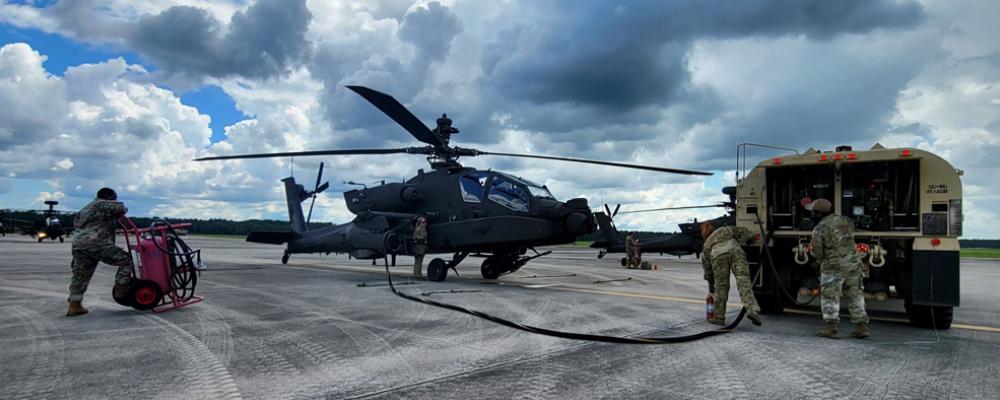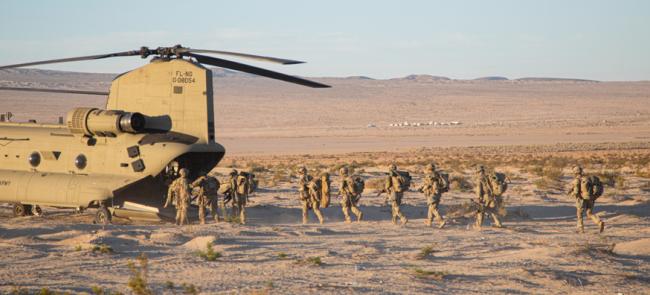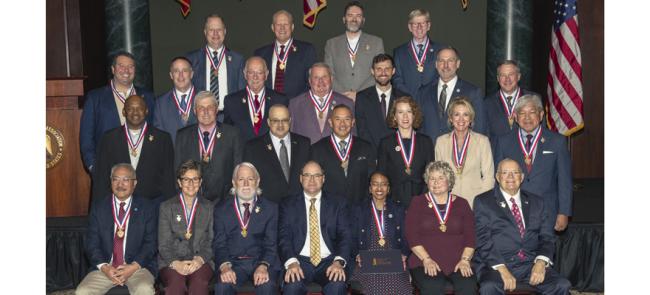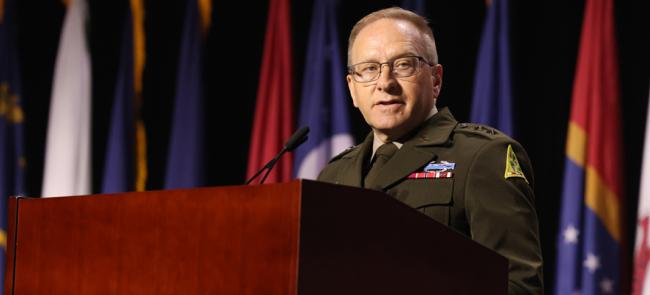
Back From the Brink
There is finally light at the end of the tunnel for what remains of the Army National Guard AH-64 Apache attack-helicopter community.
It’s a very welcome sight for the Guard’s four attack reconnaissance battalions, which have endured battles at home and abroad over the last nine years.
Their aircraft were once on the Army chopping block. While some did survive, they were among the oldest Apaches in the Army and so few in number that Guard units had to borrow aircraft from each other to deploy.
But that’s all becoming a memory now.
The Army has started delivering the new AH-64E Version 6 Guardian to the Guard. The first Echo arrived at South Carolina’s 1st Attack Reconnaissance Battalion, 151st Aviation Regiment in March, with the last of the full complement of 24 is set to arrive this summer.
Plans call for the Guard ARBs in North Carolina, Utah and a battalion split between Texas and Mississippi to get the E model by end of fiscal 2026, a fielding plan the Army recently accelerated by 18 months.
“I think the more the Guard looks like the active-duty Army, the better the Total Force is,” says Lt. Col. Jonathon Norris, the 1-151st commander. “For us to be a functional reserve for the active duty, we need to look like them, we need to train like them and we need to have the same equipment.”
His battalion is now learning how to operate that same equipment with the help of an Army New Equipment Training Team, which has been at McEntire Joint National Guard Base near Columbia, South Carolina, for much of the year.
The training team brought mobile training trailers, smart classrooms and a full-size AH-64E simulator to train pilots and maintainers. Six weeks are what it takes to train an AH-64D Longbow pilot to fly the new aircraft, says Maj. Steve Johnson, the battalion operations officer.
The AH-64E is the next-generation Apache, replacing the AH-64D. The Army began fielding it to active-component units in 2013. The aircraft has multiple upgrades from its predecessor, like the ability to control unmanned aerial vehicles and share real-time situational awareness of the operational environment and enemy forces to soldiers on the ground.
More powerful engines and software make the E model faster and more lethal. It has a top speed of 186 mph and can detect 256 potential targets at once up to 10 miles away and prioritize threats in seconds, according to industry specs.
And it can also carry more fuel and munitions, allowing the aircraft to stay in the fight longer.
Col. John “Jay” W. McElveen, the commander of South Carolina’s 59th Aviation Troop Command and a longtime Apache pilot, is impressed.
“From an actual flying perspective, the additional power that comes with it — go faster, go further, go higher, carry more weapons — is what matters,” he says.
Retired Col. Greg Hartvigsen says the AH-64Es will be more capable in extreme altitudes and weather than older Apaches.
“It’s the best in the world,” says Hartvigsen, the former commander of Utah’s 1st Attack Reconnaissance Battalion, 211th Aviation Regiment, and the former chairman of the NGAUS Army Aviation Task Force.
“Of course, anytime you put soldiers in the field, you want them to have the best and latest equipment,” he adds. “You want to combat overmatch with your enemy.”
I think the more the Guard looks like the active-duty Army, the better the Total Force is.
—Lt. Col. Jonathon Norris, the commander of the South Carolina Army National Guard's 1st Attack Reconnaissance Battalion, 151st Aviation Regiment
APACHE MAINTAINERS may be even happier than pilots to receive the Echo, says Maj. Steven Seigler, the National Guard Bureau’s Aviation Maintenance Branch chief and a former 1-151st executive officer.
“The Delta models have been ridden hard the last 20 years,” Seigler says. “You’re going to see a bump in operational readiness.”
The arrival of the E model is a great departure from Army plans a decade ago.
In 2013, Army leaders planned to eliminate all eight Guard Apache battalions at the time and transfer their 192 helicopters to the active-component as part of the sweeping Aviation Restructure Initiative.
NGAUS began opposing the ARI on first read. It argued the plan effectively took attack aviation out of the Guard, squandering some of the Army’s most skilled Apache pilots and maintainers and leaving the service without a surge capacity.
The association worked with Congress to create the National Commission on the Future of the Army to look at the proposal and other friction points between the Army and the Guard. The commission in 2016 recommended the retention of four Guard Apache battalions of 18 aircraft, which the Army followed.
Two years later, NGB announced the four ARBs that are still in the force structure.
But maintaining four battalions of 18 old AH-64Ds was a challenge. Apache battalions need 24 aircraft to deploy, which meant Guard battalions had to borrow aircraft for overseas missions and even some training.
Three battalions did deploy. Utah’s 1st Attack Reconnaissance Battalion, 211th Aviation Regiment, was the last ARB in Afghanistan.
Compounding the aircraft shortage, the Army reduced the number of Guard seats available at the Army’s aviation schoolhouse at Fort Rucker, Alabama. In 2019, Guard aviation instructors ran a special flight school there to ensure the Guard had enough pilots for scheduled deployments.
“No one likes uncertainty,” Norris says of the last few years. “It was difficult.”
“We had to just keep our heads down and focus on really high-level training to make sure we were relevant in the Apache conversation, and we were ready to do any mission asked of us,” he says.
NGAUS helped plant the modernization seed by convincing Congress to add funds for six E models for the Guard in Army fiscal 2019 appropriations.
Now, all four Guard Apache units are set to mirror those in the active component.
North Carolina’s 1st Attack Reconnaissance Battalion, 130th Aviation Regiment is next, beginning early next year.
Col. Benny F. Collins, the North Carolina Army Guard’s director, aviation and safety, says AH-64Es will draw new talent while keeping seasoned aviators in the ranks.
“Having the newest Army Apache fielded in our unit is a fantastic thing for the North Carolina National Guard and the National Guard as a whole,” he says.
Back in South Carolina, McElveen can barely believe the new aircraft he sees at his old unit.
“There were rumors every day we were going to lose them,” he says. “The biggest thing I hope people take away is that the National Guard is a necessary force in our Total Force. When that force shows up, they need to be right there with the same capability.”
The author can be reached at (202) 408-5885 or [email protected].



